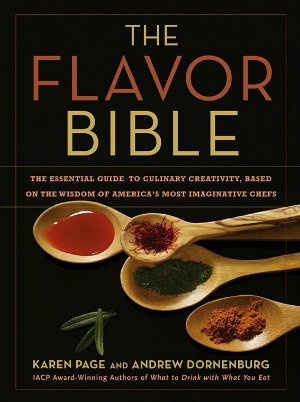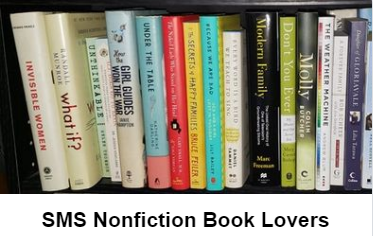 Subtitle: The Essential Guide to Culinary Creativity, Based on the Wisdom of America’s Most Imaginative Chefs
Subtitle: The Essential Guide to Culinary Creativity, Based on the Wisdom of America’s Most Imaginative Chefs
Stars: ****1/2
UPDATE: The Flavor Bible is a James Beard Award Nominee!
This isn’t your average cookbook. Instead of recipes to follow to the letter, this book contains charts to help you find flavor combinations. See the book trailer for The Flavor Bible.
Chapter 1 explains that Flavor = Taste + Mouthfeel + Aroma + “The X Factor”. It also explains what all that means.
“Mouthfeel = what is perceived by the rest of the mouth [other than taste buds]
“The X Factor” = What is perceived by the other senses – plus the heart, mind and spirit”
Chapter 2 explains that Great Cooking = Maximizing Flavor + Pleasure by Tapping Body + Heart + Mind + Spirit. This chapter discusses factors such as weather, seasonality, weight, volume, function and region.
Chapter 3, which is most of the book (340 pages) is full of charts of flavor combinations. For example, one looks like this: (… means there is more in the list I’m not showing)
GARLIC
Season: year-round
Botanical relatives: chives, leeks, onions, shallots
Function: heating
Weight: light-medium
Volume: moderatoe (esp. cooked) – loud (esp raw)
Techniques: grill, raw, roast, sautealmonds
anchovies
bacon
barbeque
basil
bay leaf
…
cayenne
cheese, Parmesan
chicken
chili peppers
…
Italian Cuisine
Korean Cuisine
lamb
leeks
LEMON: juice, zest
lemongrass
…
TOMATOES AND TOMATO SAUCE
vegetables
Vietnamese Cuisine
VINEGAR, esp. balsamic, red wine
wine, white
zucchini
So what’s with the occasional bolding and captials? Each item in the list follows a key:
Those in regular type are pairings suggested by one or more experts.
Those in bold were recommended by a number of experts.
Those in BOLD CAPS were very highly recommended by an even greater number of expertrs
Those in *BOLD CAPS with an asterisk (*) are “Holy Grail” pairings that are the most highly recommended by the greatest number of experts.
There are TONS of these charts and not just for well-known ingredients. You’ll find lists like the one above for Garam Masala, Georgian Cuisine, Frisee, Fennel, Chestnuts, Achiote Seeds, Beer, Buttermilk, Sauerkraut, Sauvignon Blanc and much, much more.
Also along with these charts are examples of dishes using these combinations (i.e. Marinated Fresh Sardines with Caramelized Fennel and Lobster Oil – Mario Batali, Babbo (New York City)
There are also lots of quotes from different chefs about the ingredients.
Savory is an herb that is very compatible in the same way fresh thyme is. You could use savory in dishes that call for thyme. – Marcel Desaulniers, The Trellis (Williamsburg, Virginia)
One last thing, the book is peppered with professional photos of real dishes from restaurants. For the most part, they look really good but there were some that didn’t look appealing to me, but then I’m picky when it comes to food.
As you can see, this book truly is a FLAVOR BIBLE. This book is recommended for those who don’t want to follow ready-made recipes anymore but create their OWN recipes.








